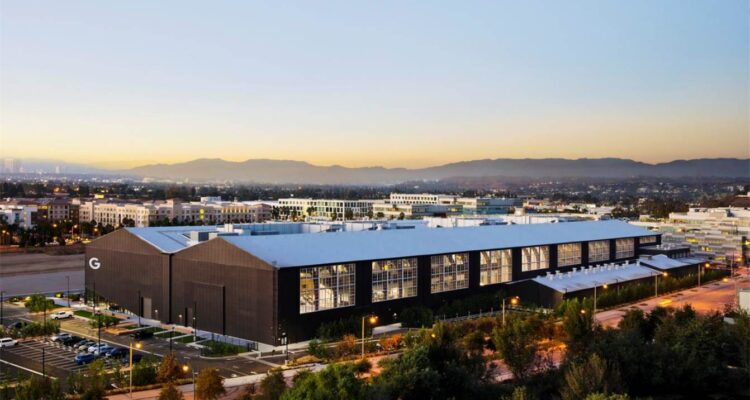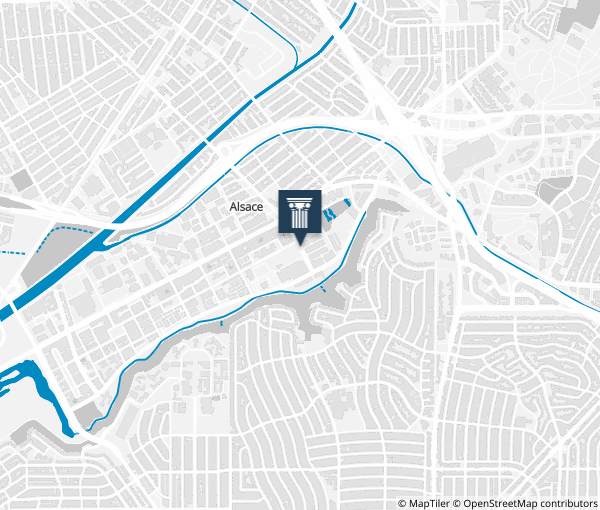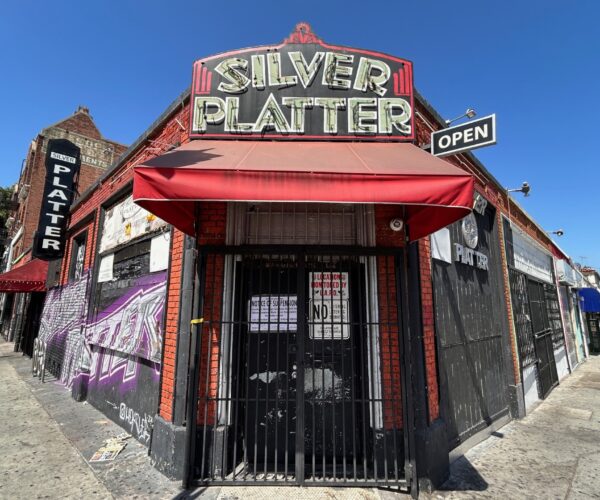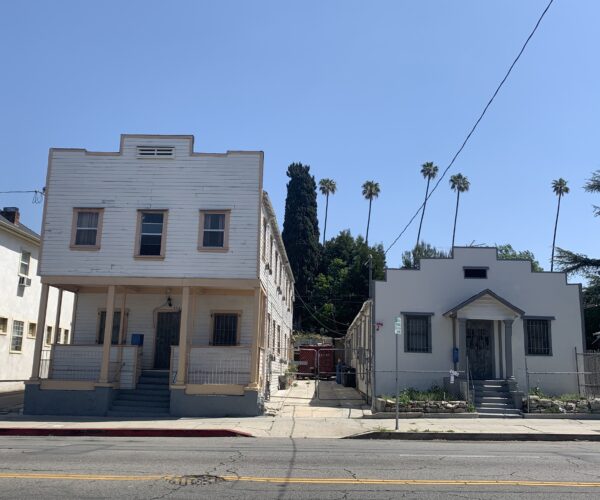
Place
Google Playa Vista
This stunning project brought a hub of innovation back to life for a new generation of tech giants.


Place Details
Address
Get directions
Year
Style
Decade
Property Type
Community
Billionaire industrialist Howard Hughes formed the Hughes Aircraft Company (HAC) in 1932 as part of the Hughes Tool Company, to track expenses related to his aviation interests.
With the likelihood of U.S. involvement in World War II, Hughes commissioned architect Henry L. Gogerty to design a building specifically for the manufacture of the H-4 Hercules “flying boat,” or “Spruce Goose.” Like the aircraft, the hangar was constructed entirely of wood due to metal shortages during the war. Completed in 1943, the hangar—known as the Cargo Building—became one of the largest wooden structures in the world at 750 feet in length—more than two football fields.
Following the end of WWII, the building housed research and production of aircraft radar, armaments, and experimental helicopters.
After Hughes’ death in 1976, the hangar and its surrounding campus were sold. While Hollywood kept the hangar standing by using it as a soundstage for films such as Independence Day and Titanic, over the years its windows were boarded up to aid in film production, and the buildings suffered from deferred maintenance.
Thankfully, in 2010, developer Wayne Ratkovich bought twenty-eight acres containing the historic hangar and other original Hughes buildings. Ratkovich led an ambitious project to transform the site into an office and production campus for creative media, named in honor of the great H-4 “Hercules.” The project earned a Conservancy Preservation Award in 2014.
While many of the buildings were adaptively reused and leased to creative and technology firms, the historic hangar remained empty. Google, who had already leased another space on campus for a YouTube production facility, decided to lease the hangar as well. They saw it as an opportunity to preserve a local landmark while making a sustainable choice by reusing an existing building.
Google set out to transform the empty hanger into “a building within a building.” The new four-story building includes office and meeting spaces—all with aviation-inspired names—along with soaring atriums and sightlines with expansive views of the historic hangar.
To bring the hangar up to code while preserving its original character, the project team removed the central spine from the ceiling, which spanned the full 750-foot length of the building, then rebuilt it in steel, and reclad it with the restored historic glue-lam wood panels.
The team removed incompatible alterations, exposing massive clerestory windows which once again flood the building with natural light. They also uncovered and restored three original stairways, now protected behind glass, a reminder to Googlers of the building’s rich history.
Google topped off the project with “The Ghost of the Goose,” a perception sculpture which hangs from the atrium ceiling. When seen from a specific angle, 2,800 floating steel balls reveal the shape of the legendary Spruce Goose. Other art and design elements throughout the building pay homage to the legend of Howard Hughes and the site’s important place in aviation history.
A hub of innovation from day one, this hangar has evolved beautifully to fuel new dreams, new economies, and new generations—which is exactly what preservation is all about.
In 2019, the Conservancy recognized the Google Playa Vista with a Preservation Award. Congratulations to the project team!


